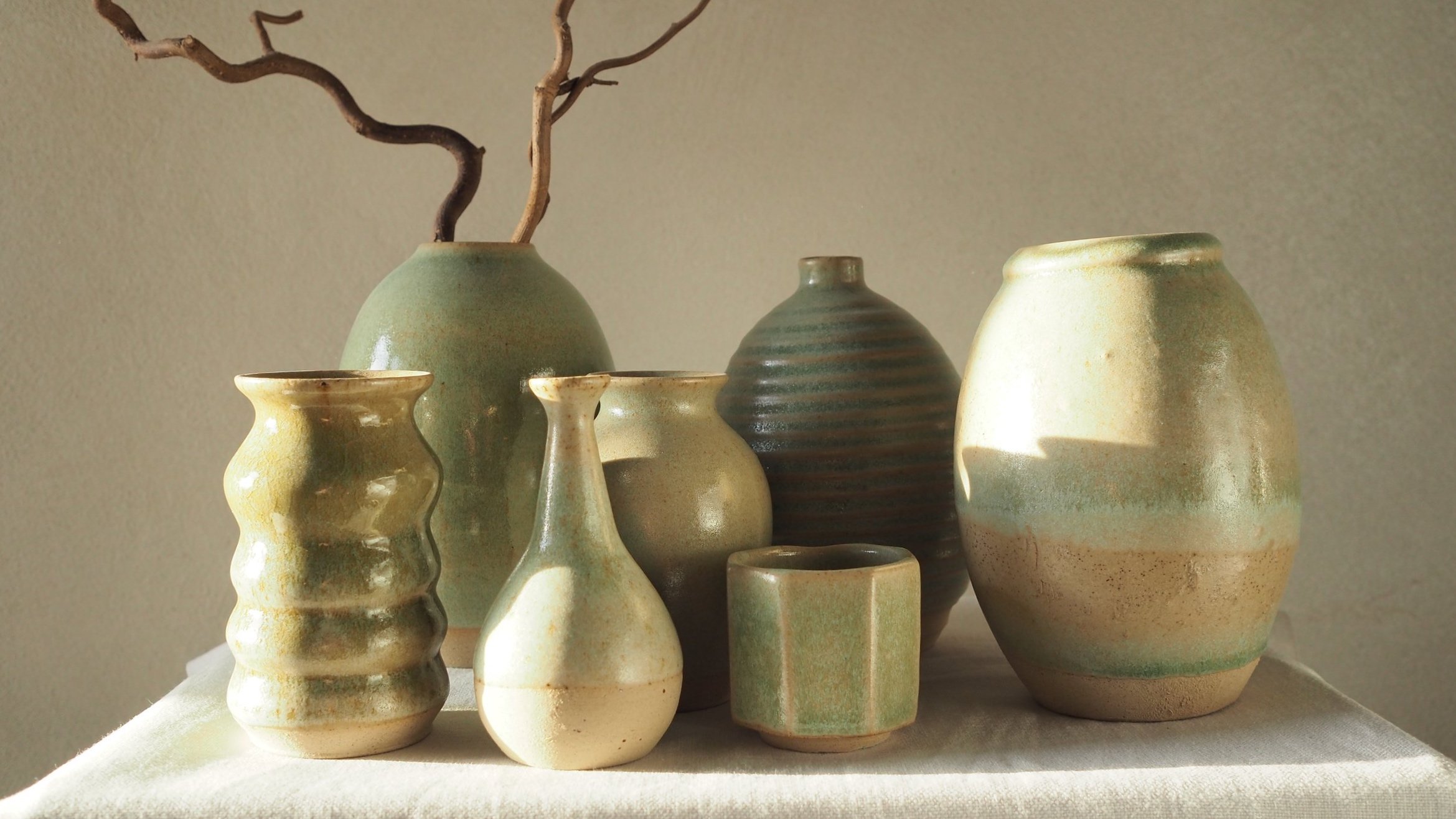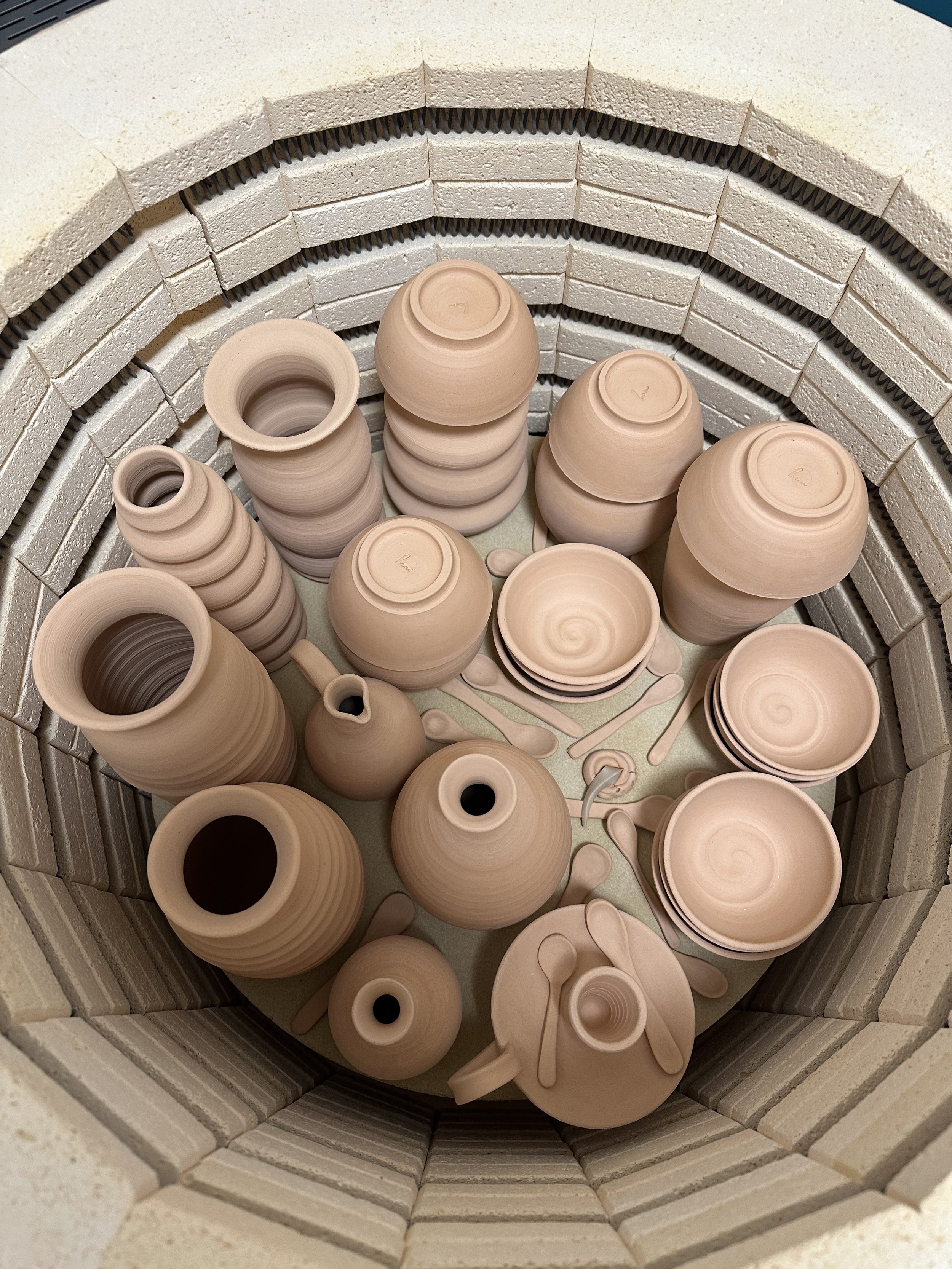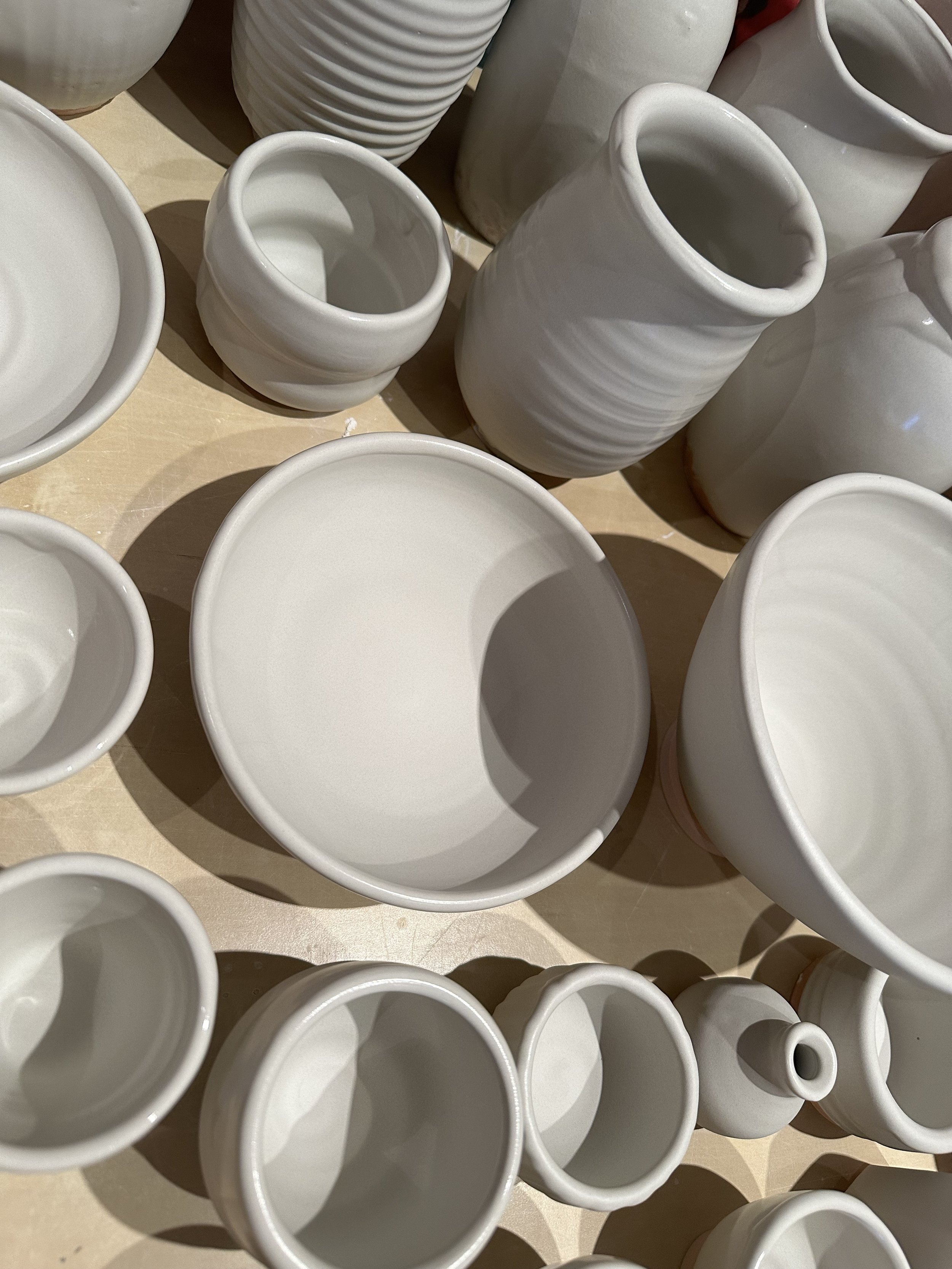
perfectly imperfect pottery
my process
-

throwing
Before I throw my clay I knead it by hand using the spiral wedge technique. If it is a new package of clay I will only wedge about 20 times to acclimate the clay to my studio environment. If I’m working with my recycled clay I will wedge at least 100 times. I work with stoneware clay sourced from Germany. I then weight out the portions of clay which will be needed for whatever I’m throwing that day. Now I am ready to spend some quality time with Takeshi, my Japanese Shimpo Whisper Wheel. This is one of my favorite parts of the process. After each piece is thrown I remove it from the wheel and allow it to naturally air dry overnight. The next morning I will come in and flip the piece over to continue to dry for the day or 24 hours.
-

trimming
After the piece has dried sufficiently to a leather hard state for approximately 8-24 hours it is time to trim the piece. I carefully place the piece back on the wheel, securing it down with a natural suction technique. Now I can start my absolute favorite part of the process which is trimming or finishing the piece. I fell the thickness and then start to shave away all the excess clay to form the desired shape and create a foot ring on the bottom. Finally I stamp the bottom side usually with my makers mark which is simply my signature initials bcm. Which stands for Brenda Colleen McLeran. The finished piece is removed from the shell and I will pass over the rim with my softest sponge. The piece is placed back on my wooden ware board shelves to let air dry for another week or so depending on the season.
All the trimmings from the pieces are put back into the slop bucket and are recycled.
-

bisque firing
After the finished pieces have dried to a bone dry state they are ready to be fired. I carefully load them into my Rohde electric kiln and set my bisque firing program which usually takes about 10 hours to arrive at 1000°C then another 24 to cool down. The bisque ware is now ready to be unloaded from the kiln.
-

glazing
I sort out my bisque ware and make a glazing plan to see which glazes I will apply to each piece and lay them out on the table. I take each piece and use my air compressor pistol to blow off any dust so that I will have a clean surface to apply the glaze. Next I select the glaze and mix it up with my drill mixer. I do a pour and dip technique usually all by hand, no tools. The glazed pieces are now left to dry for 8-24 hours. Once dried I clean the bottoms and rub off any inconsistent layers of glaze to achieve a smooth consistent surface.
-

glaze firing
The glazed pieces are ready to be fired again at 1280°C in an oxidation atmosphere in my Rohde TE 95 S electric kiln. This firing takes about 10 hours to reach 1280°C then another 24 hours to cool. Opening the kiln after a glaze firing is like Christmas. Most of the time there are beautiful desired gifts and other times are huge disappointments and pieces that actually just need to be discarded.
-

glazes
All my glazes are homemade with raw materials from my own glaze recipes. They are all non toxic and food safe. I take great pride in this because I feel that this truly makes each piece a 100% my own creation. Learning how to make glazes was a very gratifying lesson and I had an amazing teacher. Finding the perfect balance of raw materials, colouring oxides and the ideal firing program was and is incredibly challenging however. Test upon test upon test need to be undergone before the perfect glaze is achieved.
My colours are soft neutral tones that stand alone beautifully but also pair together seamlessly.
Acqua is my clear glaze. It’s really easy to use and when applied thin really lets the clay body show through nicely. When applied thick creates a milky violet tone, shiny.
Acquamarina is one of my favorite colors, a classic shiny turquoise.
Guscio is eggshell in Italian which is a basic stoneware off white with brown speckles where the iron in the clay shows through, satin finish.
Peony, just like the flower, pink! Somewhat shiny and when applied thick has a lovely white mottling.
Porcini is one of the best Italian mushrooms and I have created a glaze that perfectly mimics it. A beige with some dark brown mottling, shiny.
Pavlova a bright white with a satin finish
pottery information & care
Artisan hand made in Italy
Made with non toxic materials
Food safe
Microwave safe
Dishwasher safe
Best hand washed with mild soap

